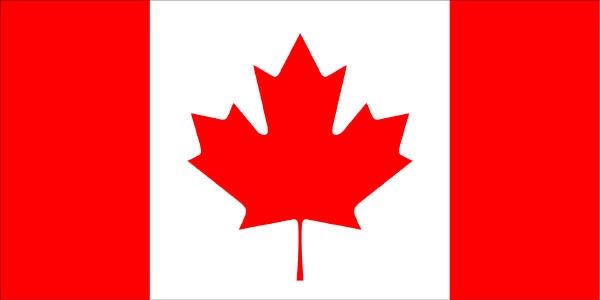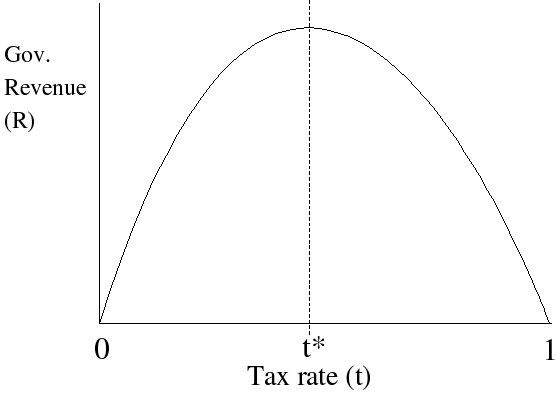Is collusion keeping the iPhone out of Canada?
Oh my, we’ve written our fair share about the iPhone. More than our share, even. That’s because it’s more than a phone. It’s a cultural phenomenon. And now that phenomenon is spreading overseas, with the iPhone becoming available in many European countries. Notably absent from that list (though clearly not European) is our neighbor to the north. No, Canada won’t be getting the iPhone any time soon, and no, this is not a vast conspiracy by Apple. It might be, though, the result of collusion between Bell and Rogers, Canada’s foremost telecommunications companies. How can two companies keep such a hyped device out of the country? Simple. By blocking the lifeline on which it feeds: the Internet.
There’s no subtle way to put this. Broadband rates in Canada are the pits. While we’ll be focusing on mobile broadband, this even extends to residential Internet access, though not nearly to the same degree. For example (and we’re just pulling this one out), Rogers charges $52.95 per month for 8 megabits per second of download speed and 800 kilobits per second of download. That doesn’t sound outrageous, but in the U.S. Verizon offers their FiOS Internet, which is 10 megabits per second download and one megabit per second upload, for just $39.99 per month — and that’s after all of their promotional rates have expired. You can save even more if you bundle services.
Back in the day, you could chalk this up to a difference in currency. However, last month we got word that the currencies are equal. While the publishing industry is having a difficult time dealing with this, it’s still a problem for broadband. Specifically mobile broadband.
We first direct you to this informative piece: Canada worse than 3rd world countries when it comes to mobile data access. The graph at the top reveals the sickeningly high cost of mobile data in Canada per 500 MB per month. Let’s take Sprint, who is at $69 — and keep in mind that this isn’t the best deal in America. For the same service in Canada, you’d have to pay $375 with Telus, $850 with Bel, and $1,600 with Rogers and Fido. Are you ready for the worst part? Rogers is the only GSM carrier among them, so they’re the only ones that could carry the iPhone.
Recently, we reviewed a number of Canadian prepaid providers. What we found when we got to the “Data Options” section was that most of them offered a very simple Mobile Web feature for between $5 and $10 per month. That seems fine, until you notice that the highest allowance among these plans was 2 MB per month. Yes, two whole megabytes. To give you an idea of how puny that is, the main blog page here is 360 KB. After that, you’re charged varying rates for each KB over the limit you go, and the rate ain’t pretty.
Now imagine the rate if you had an iPhone. You’ve got e-mail, web sites, downloads, and streaming content. The latter two are not bandwidth friendly, especially when you’re on a tight budget. Rogers, though, makes this a lot tougher on heavy data users. Check out their data deal.
 It’s only $10 a month, so you might think we’re drinking the crazy juice. However, look a bit deeper. Each web page or e-mail is considered to be 4 KB maximum. For those of you who didn’t take BASIC programming in high school, 4 KB is equivalent to 4,000 characters — just text. You’re not going to find many web pages — or at least useful web pages — without images. So you’re probably going over 4 KB every time you load a page (once again, the Prepaid Reviews blog is 360 KB). And then you’re paying 4 cents per KB over the allotted 4. So you’d be paying over $14 to view this page. If you wanted to download a song from the new Radiohead album, you’d be looking at $120. Seriously. That is, unless we’re vastly missing something regarding this bandwidth limitation — and by all indications we’re not.
To the collusion aspect. Before they were bought by Rogers, Fido offered an unlimited data plan. However, once they were assimilated into the Canadian telecom giant, it was dropped; Rogers can’t be competing with itself, after all. So Rogers/Fido sets the market. Bell then sees the prices, and goes a little lower. Yes, that gives them some kind of competitive advantage, but they’re still pricing the service well out of a reasonable range. Same goes for Telus.
Now, we’ve been accused of being conspiracy theorists in the past. It comes with the job, we suppose. However, it’s not beyond the realm of possibility that these companies have a tight-lipped agreement to let things continue like this. You might think that’s malarkey, since Rogers reaps the biggest benefits because of their higher rates. Ah, but that fails to take into consideration the Laffer Curve. A quick explanation:
It’s only $10 a month, so you might think we’re drinking the crazy juice. However, look a bit deeper. Each web page or e-mail is considered to be 4 KB maximum. For those of you who didn’t take BASIC programming in high school, 4 KB is equivalent to 4,000 characters — just text. You’re not going to find many web pages — or at least useful web pages — without images. So you’re probably going over 4 KB every time you load a page (once again, the Prepaid Reviews blog is 360 KB). And then you’re paying 4 cents per KB over the allotted 4. So you’d be paying over $14 to view this page. If you wanted to download a song from the new Radiohead album, you’d be looking at $120. Seriously. That is, unless we’re vastly missing something regarding this bandwidth limitation — and by all indications we’re not.
To the collusion aspect. Before they were bought by Rogers, Fido offered an unlimited data plan. However, once they were assimilated into the Canadian telecom giant, it was dropped; Rogers can’t be competing with itself, after all. So Rogers/Fido sets the market. Bell then sees the prices, and goes a little lower. Yes, that gives them some kind of competitive advantage, but they’re still pricing the service well out of a reasonable range. Same goes for Telus.
Now, we’ve been accused of being conspiracy theorists in the past. It comes with the job, we suppose. However, it’s not beyond the realm of possibility that these companies have a tight-lipped agreement to let things continue like this. You might think that’s malarkey, since Rogers reaps the biggest benefits because of their higher rates. Ah, but that fails to take into consideration the Laffer Curve. A quick explanation:
 There is an optimal point at which you’ll have the most subscribers that generate the most amount of money. For instance, let’s take Rogers’ home Internet rates, since they’re easier to deal with. They now charge $53 per month, and say they have 1 million subscribers. Okay. Now, if they raise that rate, they’ll generate more income per user, but they’ll lose their gross number of users. So say they raise it to $60 per month, but subscriber numbers fall to 900,000. So now you’re bringing in $54 million rather than $53 million. In that hypothetical case, raising rates would make financial sense.
However, what about lowering rates? What if the lack of demand in Canada for data services is linked directly to the absurd rates? What if Rogers dropped its home Internet price to Verizon’s $40? And what if they gained another million customers because they now offered the service at a more affordable rate? Well, they would stand to make a whole boatload more money.
No one can be sure that lowering the price of data in Canada would even out financially for the carriers over time. But could they do any worse? We complain about American customers getting bilked, but really, Canadians have it a ton worse. There’s not much we, as Americans, can do. But if you’re Canadian, let someone know. Spread the word. Make it an issue. Or is that just a completely American concept?]]>
There is an optimal point at which you’ll have the most subscribers that generate the most amount of money. For instance, let’s take Rogers’ home Internet rates, since they’re easier to deal with. They now charge $53 per month, and say they have 1 million subscribers. Okay. Now, if they raise that rate, they’ll generate more income per user, but they’ll lose their gross number of users. So say they raise it to $60 per month, but subscriber numbers fall to 900,000. So now you’re bringing in $54 million rather than $53 million. In that hypothetical case, raising rates would make financial sense.
However, what about lowering rates? What if the lack of demand in Canada for data services is linked directly to the absurd rates? What if Rogers dropped its home Internet price to Verizon’s $40? And what if they gained another million customers because they now offered the service at a more affordable rate? Well, they would stand to make a whole boatload more money.
No one can be sure that lowering the price of data in Canada would even out financially for the carriers over time. But could they do any worse? We complain about American customers getting bilked, but really, Canadians have it a ton worse. There’s not much we, as Americans, can do. But if you’re Canadian, let someone know. Spread the word. Make it an issue. Or is that just a completely American concept?]]>

http://www.howardforums.com/showthread.php?t=1255401
The situation is actually more sickening then you described it. Recently Rogers announced how they just rolled out their new 3G wireless network to Quebec. With it they are offering a new plan of $5 for UNLIMITED video chat … but only 10MB net browsing.
Likewise, for $25 you get unlimited radio and video on demand to your cell phone … but still only 10MB max browsing.
Why? Their line is that their system cannot handle the traffic. Except logically it can as quite able to stream video and audio.
And yet no one calls them on it because we Canadians are too passive or don’t understand they are being cheated.
I am trying to figure out what to do about this …
I have been pushing this issue up here for a long time but nobody seems to notice. Canadians just don’t even have mobile internet on the radar unless their workplace pays for their Blackberry. I’m one of the few Canadians that has an old sidekick with a 20$ unlimited data plan. The internet is painfully slow, I’m holding onto it until we get mobile data rates fit for the industrialized world.
Canada pays among the highest digital wireless rates in the world.The corruption of Canadian telcos is so bad that they freely engage in bait and switch practices that have long been outlawed in the US. They call it the System Access Fee (SAF).